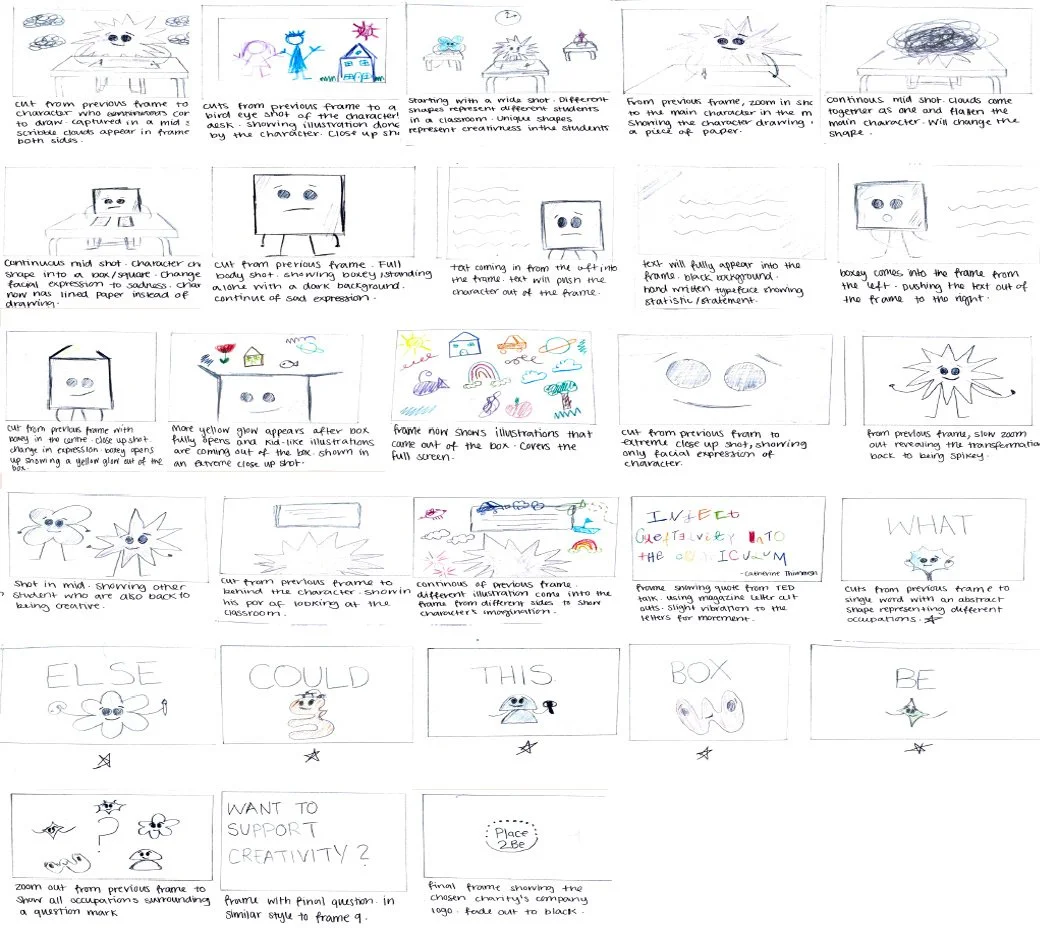
Motion project
beyond the box
“Schools demand rules and confined spaces… Injecting creativity into the current education structure and being open to new possibilities or perspectives… Flexibility is the key… So, Instead of asking a student to think outside the box, we perhaps should ask them: what else could this box be?”
C.Thimmesh, 2014
concept and development
At the outset of this project, our team was inspired by a TED Talk from Cathrine Thimmesh, an award-winning author, speaker, and educator in creativity. In her talk, Thimmesh stresses the importance of reintroducing creative thinking into school curriculums, which deeply resonated with us and motivated us to bring this concept to life visually. For the visual identity, we developed mood boards and style frames to guide the design process, adopting a collage-inspired approach. We incorporated free, playful drawings to reflect the creative theme, aiming for a colourful and dynamic outcome. The integration of hand-drawn typography in motion was key to complementing both the look and storytelling of the project.
target audience
As a team, we aimed to emphasise the importance of encouraging children aged 6-14 to express their creativity rather than restricting it due to the common misconception that creativity is limited to artistic activities. Therefore our target audience is aimed to parents.




What do we do?
Another important aspect we explored was the role of creativity in health and well-being within the education system. Research shows that one in six children aged 5 to 16 has a diagnosed mental health disorder (Creative Health, 2024). Studies indicate a social divide in children's participation in arts and culture, though this is often limited to extracurricular activities. Providing young people with access to creativity is essential for supporting their mental well-being. However, reduced funding has significantly impacted arts education and creativity in schools. The OECD (Organisation for Economic Cooperation and Development) recognises that creativity helps students adapt quickly, contributing to strong educational outcomes and developing transferable skills. These skills not only benefit individual learners but also enhance society’s future prospects
Semi-Final
Final Story Board
In the final storyboard, we focused on framing the key sequences and camera angles to get a clear overall vision of what we needed to accomplish by the end of the assignment. This included considering colours, facial expressions, and the environment to better understand the backgrounds and characters. It also helped guide us toward finalising the message and call to action.
Final animatics
For the animatics, we first recorded the audio, then expanded the script. I adjusted the audio with sound effects and synchronised it with the script, placing the visuals over the storyboard.



